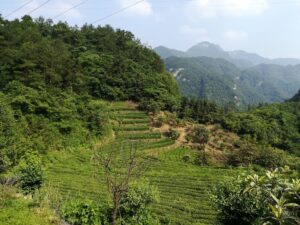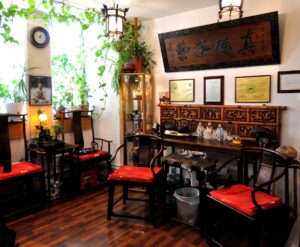There are many factors that contribute to the quality of tea. These include the environment the tea is growing in, timing of the harvest and how it is processed. Temperature, exposure to the sun, elevation, seasons and method of harvesting are all factors. Especially how it is heated, rolled and dried can significantly change the quality of the leaves.

By checking the harvest date and where the tea comes from, you can get a hint of the leaf quality. Most serious brands will tell you exactly where it comes from, not just the country. By checking the producer, you can get a hint of the processing quality. Tea growing in various locations can have unique qualities. Often, the name of the tea already indicates a certain quality or process. You can discern teas by look, smell and taste. Sometimes it is about experience, but often you just have to have a good reference. You’ll have to do a little bit of research yourself to find out more. However, the follow variations may help you understand a bit better:
Sencha variations
To give an example, here is a short list of Japanese green tea Sencha variations. All from the same leaf, but different in character, qualities and level of umami. The way I describe umami is the taste of broth. The thicker and richer, the better.
Variation in umami:
- Kukicha: A blend including the stems and twigs of the tea plant. Although it still captures the Sencha taste, it is not able to express the same umami richness. It does have a different character. Farmers used to blend this tea for themselves after selling their best leaves. Today, it is a popular tea with great health benefits.
- Sencha: A harvest of younger leaves. Most commonly used tea in Japan. A tea with rich taste and amazing colour.
- Kabusecha: Before harvesting, this tea is shaded from the sun for about a week or two to further promote the development of rich flavours. Only younger leaves are used.
- Gyokuro: This tea is shaded for about 20 days, younger leaves only. Used to be an exclusive tea of the emperor. It is even used for cooking after drinking the tea, so that it does not go to waste.
Basically, these teas are classified in grades of quality and character. In the same way, most teas are graded in quality with significant differences. Selection is key.
Variation in character:
- Shincha: New leaves from first harvest of the season. Gives a fresh and rich character.
- Genmaicha: Mixed with steamed/roasted brown rice puffs. Sushi restaurants here in Stockholm commonly serve this tea.
- Hojicha: Is a roasted variation with a smoky aroma.
- Macha: Grounded with stone into powder form, often used in tea ceremonies. A rich tea with a pleasant bitterness. This tea is otherwise also used in food, drinks and deserts of all kinds. In this case, the tea is actually consumed in full. Preparing Macha is a bit more complicated, make sure to check that out.
Almost each of the listed variations above have variations of their own. As you can imagine, the factors that can influence the character of tea are many, even though they all come from the same leaf. Sencha is one of my favourite teas. Personally, I buy and store Kukicha or Sencha in bulk, so that i can enjoy it daily. Keep a small amount of Kabusecha or Gyokuro for special occasions if you like. I recommend that you also try the other variations as they significantly differ in character. We took Sencha as an example, but there are countless of tea’s from around the world that you can explore!
Storage and preparation
The way you store or prepare tea is of extreme importance to preserve the quality. Besides selecting the right tea, this is one of the few things that you can do at home to ensure you enjoy the tea in the best way. Always check for storage and preparation instructions for the tea that you purchase.
